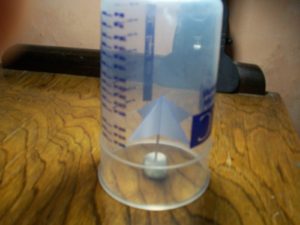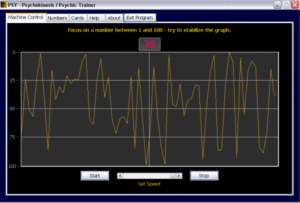If you’re anything like me, you have probably focused all your attention on the T.V. remote control willing it to move into your hand so you wouldn’t have to get up off the couch. If you’ve succeeded in making that happen, congratulations, you’re a Psychokinetic. One of the most famous Psychokinetics in fiction today is Eleven from “Stranger Things”. It’s a great show with compelling characters and a creepy storyline, but it isn’t precisely accurate. Eleven is a pre-pubescent girl who was taken in by a shadow organization because of her incredible and innate ability to move objects simply through concentration. In one scene, Eleven is able to move a soda can a short distance across a table, something that hyper-talented Psychokinetics might make happen. Later in the show, Eleven wrecks her room with the sheer power of her mind. That’s never been proven to happen anywhere in Parapsychological research. However, the prevalent theory of Poltergeist hauntings is the acute psychokinetic activity of a young person living there.
Once again, this psychic ability is frequently subtle, frequently mercurial and unreliable. Parapsychologists theorize that because we live in a world where gravity and mass play important relationship roles, we cannot believe that the focus of our minds could have any impact on an object. There must be a reaction: my hand or something my hand controls must push that soda can. This is what reality has taught us must happen. When a psychic can overcome this sense of reality, they may have the ability to move something small in very small ways.
One way psychokinesis is tested is by using something called a psy wheel or a bell jar that has a suspended piece of folded foil or paper in it. The bell jar is a domed glass jar that prevents flows of air from affecting the objects held in it. It must be placed on a firm surface that is immune to vibrations. The Psychokinetic will do something to affect the suspended foil or paper, either by placing their hands near the bell jar or simply concentrating on the object inside. A small movement of the object is enough to claim success. An argument against psychokinesis has to do with fluid dynamics and the heat emanating from the tester’s hands. It’s best to perform this test with your hands as far away from the jar as possible. 
Another test of psychokinesis is the bent utensil test made famous by Yuri Gellar. This is also an easy test to fake if you first have a bent spoon or fork to switch using sleight of hand techniques. Mr. Gellar’s actual ability as a Psychokinetic was called suspect when he was unable to prove his ability with objects provided for him rather than those he brought himself. I asked about this particular test when I looked at the giant jar of bent spoons on display at the Rhine. They have a monthly “Psy Games” event where anyone can come and attempt to bend a spoon amongst other things. These spoons are saved from those who had successfully bent them. I am skeptical about this myself. Doesn’t the person, who is grasping the spoon between thumb and forefinger simply use strength to alter the neck of the spoon? There isn’t really any proof that they didn’t simply do so. I hypothesize that the neck of the spoon is warmed sufficiently by grasping it at its weakest point to anneal the metal and make it easy to bend. I play with metal for fun dowsing it in flame and manipulating its form so I’m familiar with the annealing technique. The only way to truly know is to look at the crystal alignment in the metal before and after the spoon bending to see if the mind had anything to do with it or if it was a combination of heat and strength.
Psychokinetics may also be responsible for unusual effects on electronic devices such as smartphones and computers. Tests used to determine whether a Psychokinetic effects electronics can utilize a random number generator, a randomized light generator or any number of computer applications where simply concentrating on something causes an electronic reaction. One test that I participated in (software available from PSY) was trying to keep a blip on the computer screen above the median line and, if possible, above even higher lines known as the primary and secondary standard deviations. The application calculated how often I stayed above the median or other two higher lines. I was woefully average after ten tries. 
Here’s how to test yourself for telekinetic ability from the Rhine Research Center
